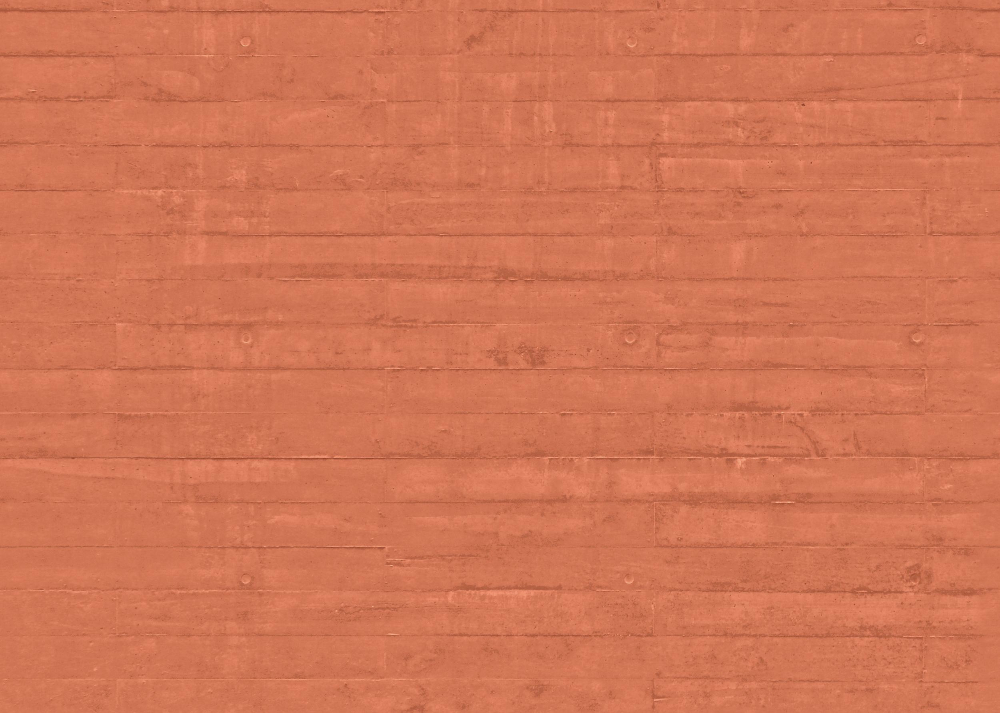Pigmented Concrete
Category
Concrete
Download
Edit
Concrete has been in use since at least ancient Mayan times, where it was used on temples and other key structures, as well as on a smaller scale in a related form, utilising hydraulic lime, in Middle Eastern civilisations from the 4th century BC. In the Roman era it revolutionised design, as it was employed to create previously unbuildable structures such as the Pantheon, which remains the largest unreinforced concrete dome in the world. The use of concrete in Roman architecture is extensive; the high compressive strengths of Roman concrete was a game changer as it removed the need for post and beam structures, or limits on opening sizes as there was not a requirement for lintel beams, while being ruled by brick dimensions was no longer an issue. Modern concrete tends to contain a form of reinforcement bars, usually metal, to add tensile strength so that concrete can be used as both a loadbearing and long-spanning structural material. The range of concrete types, its durability, strength and variety of different finishes have made it a popular choice in a multitude of different spaces, building and construction types.
Concrete is manufactured by mixing cement with gravel, sand and water and is normally a cool, grey tone largely due to the composition of the cement. Portland cement is the most common form of cement, although is available as a white Portland cement, while other cements can influence the tones of the finished, set concrete. Pigmenting the concrete is achieved by adding either iron oxide to achieve warm colours like reds, oranges and yellows, or chromium cobalt oxide for cool shades such as blues or greens. Combining both oxides with a form of volcanic cement, Pollolanic, can achieve a completely black concrete. The oxides can be added in liquid or powder form to the concrete while it is being mixed to improve their appearance and achieve a desired colour, normally different to the standard, typical cool greys. While concrete can also be painted or dyed, pigmentation creates a more stable colour as it is mixed through the concrete during manufacture, therefore it won’t peal or chip off after a period of time and has a minimal effect on the performance of concrete.
The range of possible finished colours is extraordinary, meaning pigmented concrete can be specified as a bold, expressive element, or a restrained, muted background setting to create a calm, cool, clean atmosphere. Concrete has the ability to mimic marbles and other natural textures due to the variety of finishing procedures available. With the addition of pigments and different moulds or shuttering, it is possible to create concretes which mimic specific types of stone, timber or metal textures and appearances, being as smooth or coarse as desired. This pigmented concrete material is a bold, vibrant burnt orange colour, closer in shade to adobe – an earth based, distant predecessor to concrete, with a soft, pastel, textured wash – likely achieved by the inclusion of iron oxide pigmentation. This particular concrete is laid in-situ, with a board-marked finish – where the shuttering, the mould into which the concrete mixture is poured on site, is formed with boards of timber, which in this case are assembled horizontally – giving a particular, strong, timber grain finish.
Visually, pigmented concrete is uniform in colour, creating the effect of a homogenous mass when used on large walls and structures. It is also used as a background tone to offset, contrast or compliment other colours and materials in the environment, or add a defining colour scheme to the project. Unaffected by surface abrasion as it is uniform in colour throughout its depth on and below the surface, it can usually maintain its colour despite exposure to ultraviolet light or heat. The vibrant, rich, warm colour of this pigmented concrete makes it a good choice for projects where the desire is to respond contextually to the surrounding context or landscape by imitating the forms and colours of earth, adobe, timber or rusted metals, highlight a particular volume or contrasting element, or differentiating elements between old and new, or of differing functions within one project. Concrete is also excellent for reducing low frequency noise and is therefore often used in environments where acoustic control is a priority. Regular concrete tones can be cold and austere; this warm shade of pigmentation appears more endearing, welcoming and intimate.
The combined structural and aesthetic qualities of concrete allow it to be used both structurally or decoratively as floor slabs, flooring, walls, façades, roofs and landscaping features. It is a highly versatile, waterproof material when set and properly sealed, where it is used for water features, foundations, bridges, dams, tunnels, infrastructural and other engineering works.
Alongside its extreme longevity and durable performance characteristics, concrete is also thermally massive, meaning it can help regulate temperatures internally in hot climates, collecting heat during the day via radiation from the sun and convection from air while keeping the spaces cool, then releasing the heat slowly as the air temperature cools at night as the heat passes from external to internal surfaces through the extremely deep walls, maintaining consistent, more comfortable environments in extremely hot locations. It is still able to perform this function when pigmented but would not if it were painted, as the paint would repel or block the transfer of much of the heat.
A seamless concrete texture with a pigmented concrete surface. Seamless textures can be tiled repeatedly across a surface without visible seams making them useful for architectural drawings and 3D models. This image can be used as a SketchUp texture, Revit material or imported into Photoshop for use in 2D illustrations. A high resolution version of this texture is available, as well as CAD hatches and PBR maps with Architextures Pro.

